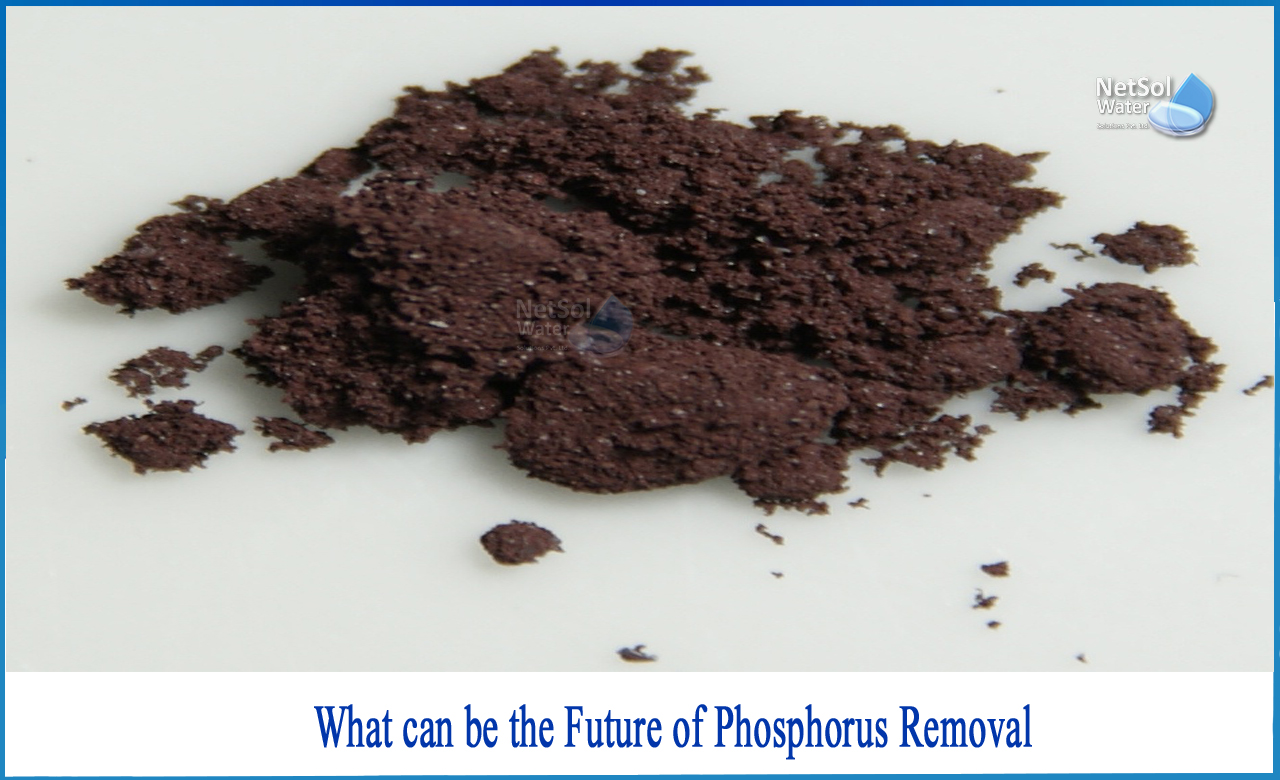What can be the future of phosphorus removal?
Controlling phosphorus discharged from municipal and industrial wastewater treatment plants is a critical component of preventing surface water eutrophication. Phosphorous is one of the most important nutrients in the eutrophication of lakes and natural waters. Its presence creates a variety of water quality issues, including higher purification costs, reduced recreational and conservation value of impoundments, livestock loss, and the potential for algal toxins to be lethal in drinking water.
The following are some of the phosphorus removal technologies currently available:
A: Physical
1: Filtration for particulate ‘P’
If ‘P’ accounts for 2-3 percent of organic solids, a total suspended solids (TSS) of 20 mg/L implies 0.4-0.6 mg/L of effluent ‘P’.
The ‘P’ concentration in plants with EBPR is significantly higher. For facilities with low effluent TP permits, sand filtering or another type of TSS removal (e.g., membrane, chemical precipitation) is likely required.
2: Membrane engineering
Membrane technologies have sparked interest in wastewater treatment in general, and P removal in particular, in recent years. Membranes can remove dissolved ‘P’ in addition to extracting ‘P’ from the TSS. Membrane bioreactors (MBRs), tertiary membrane filtration (after secondary treatment), and reverse osmosis (RO) systems have all been successfully deployed in full-scale plants.
Several facilities achieved a TP concentration of less than 0.1 mg/L in their effluent, implying that the current technology limits are 0.04 mg/L for MBRs and tertiary membrane filtration, and 0.008 mg/L for RO.
B: Chemical
1: Precipitation
Chemical precipitation has been used to remove ‘P’ for a long time. The additional sludge created by chemical precipitation for ‘P’ removal continues to be a big concern. This can be quite dramatic, especially if the primary treatment method used is lime application. Although the use of alum after secondary treatment is expected to result in significantly less sludge, the increase could still be troublesome.
2: ION Exchange
The ion exchange technique can also be utilised to the removal of ‘P’ from wastewater. ‘Anionic P’ is the most common type of ‘P’ in wastewater discharge. The exchange of phosphate ions between the liquid wastewater and the solid ion exchanger is reversible, allowing for simultaneous removal and recovery. Immobilized metal cation particles serve as the polymer exchange base, also known as a polymeric ligand exchanger, on which P-selective nanoparticles (such as ferric oxide) are deposited. This method favours the presence of ‘P’ anions in wastewater over other "competing" ions like sulphates and chlorides. Due to the low amount of phosphate ions in wastewater effluents compared to competing species, this has traditionally been challenging.
C: Biological
Assi?milation
Biological assimilation - the integration of ‘P’ as an important element in biomass, particularly through the growth of photosynthetic organisms – has long been used to remove phosphorus from wastewater (plants, algae, and some bacteria, such as cyanobacteria. This was formerly accomplished using treatment ponds with attached algae, rooted plants, or even floating plants. During the growth season, wastewater is applied to the ground.
Constructed wetlands have also been utilised, and they are now a well-established practise. In all of these circumstances, however, the net biomass growth must be stopped in order to prevent the biomass from decaying and releasing the ‘P’.
Phosphorus removal by biological means has been improved (EBPR)
EPBR has been used in classic activated sludge (CAS) systems for a long time. Optimizing designs for continuous-flow systems for P-removal and understanding the effects of physical parameters on system performance have been the focus of much research. Traditional carbonaceous contaminants (BOD), nitrogen, and phosphorus can all be removed in a single system, albeit achieving very low overall N and P concentrations in such systems can be difficult.
The phosphate in EBPR is eliminated in the waste activated sludge, which can include up to 5% P (dry weight) compared to only 2-3% in non-EBPR sludges. Membrane bioreactors (MBR), granular sludge reactors, and sequencing batch biofilm reactors are all examples of recent EBPR uses (SBRs). Incorporating EBPR into MBRs, whether SBRs or continuous-flow, has been shown to be effective in removing high amounts of P from municipal wastewater.
What can Netsol Water provide?
Netsol Water is a significant water and wastewater treatment firm in India, offering WTP, WWTP, STP, and ETP manufacture, among other services.
Biological treatment, aerobic, anaerobic, activated carbon, MBBR, MBR, coagulant, and other enhanced tertiary treatment technologies can help wastewater plants achieve ‘P’ removal consents in an effective manner.
Netsol Water is Greater Noida-based leading water & wastewater treatment plant manufacturer. We are industry's most demanding company based on client review and work quality. We are known as best commercial RO plant manufacturers, industrial RO plant manufacturer, sewage treatment plant manufacturer, Water Softener Plant Manufacturers and effluent treatment plant manufacturers. Apart from this 24x7 customer support is our USP. Call on +91-9650608473, or write us at enquiry@netsolwater.com for any support, inquiry or product-purchase related query.



